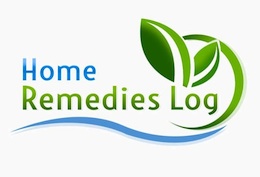
Filtering_of_honey
What It Is and Where It Comes From
Honey is a kind of food that is produced by bees and it is consumed by human beings. Honey has a sweet taste and it is produced by the use of nectar that is obtained from flowers by bees.
The sweetness in honey is a result of glucose and monosaccharides fructose and its sweetness can equal the sweetness of granulated sugar. The type of honey that is consumed by human beings is the one produced by honey bees and collected by bee keepers. The nectar collected from flowers is transformed into honey through a process called regurgitation. This honey is then stored in the honeycombs as a primary source of food for the bees in the beehive. Beekeeping results to overproduction of honey which is then harvested from the colony for human consumption.
Introduction:
Medicinal Properties
Anti-bacterial properties – An enzyme contained in honey produces hydrogen peroxide which is used for treating wounds by preventing the entering of bacteria into the wound hence promoting healing of the wound. It also has antimicrobial agent which prohibits bacterial growth.
Hygroscopic in honey – This property enables honey to absorb moisture from the air when exposed. This property is good in the treatment of open wounds. It also helps in keeping the skin moist hence preventing scarring and promotes the growth of tissues.
Antioxidant properties – It has antioxidants which help to kill chemical agents that are believed to be biologically destructive and they may be linked to cancer. The antioxidants also help to moisturize the skin keeping the skin look young and youthful.
What is it Used For and How?
Honey is used for various purposes such as for flavoring and as a sweeter in different beverages and foods. It is also used for medical purposes as a home remedy.
Home Remedy for Cuts and Wounds
For many years people from generation to generation have used honey as a home remedy for cuts, burns and wounds. Honey is also used as a natural remedy for treating other ailments such as athlete foot, arthritis pain and yeast infection. Honey has antiseptic properties which help to inhibit bacterial growth hence helps to keep clean external wounds and keep them free from any further infections. It is also used for treating cuts, wounds and burns since it can easily absorb any moisture from the air hence promoting healing.
Antibacterial properties present in honey act as an anti-inflammatory agent hence reducing pain, swelling and scaring of wounds. The anti-bacterial properties also help to prevent infection on the cuts, burns and wounds.
Wounds
Clean the wounded area and apply a small amount of honey and wrap it. This should be repeated at least once daily until the wound is healed.
Treating Cough and Sore Throat
Honey acts a perfect remedy for a cough and sore throat. Mix a teaspoon of honey with lemon and take to treat a cough and sore throat. Honey can also be mixed with crushed ginger and garlic and taken to treat a sore throat and cough.
Using Honey for Skin Exfoliating and as a Facial
The antioxidant properties present in honey make it good for skin exfoliating. Honey helps to moisturize the skin and makes it to look youthful. A teaspoon of honey is applied on the face and left for ten to thirty minutes and rinse with cool water. This can help to make the skin smooth, improve the skin tone, reduce blemishes and fight wrinkles.
How Effective It Is
According to a study published in Microbiology, honey is effective in the treatment of wounds and preventing infections on such wounds. Honey destroys fully formed streptococcus pygenes, a skin bacterium that is associated with non-healing wounds (chronic wounds). Honey also prevents the bacteria from binding to wound tissue. More than 80 bacteria species are inhibited by honey.
How Safe Is It and its Side Effects
Honey is safe when taken in the recommended dose. However, people with food or polyvalent pollen allergies should avoid the consumption of honey. Honey produced from flowering plants belonging to the genus Rhododendron are known to cause side effects. The side effects can differ from one case to the other.
Infants can also get side effects such as infant botulism which is a result of consuming of honey that contains Clostridium botulinum spore. Pregnant women and breastfeeding woman are also advised not to take honey as it can be harmful to them and the fetus.


